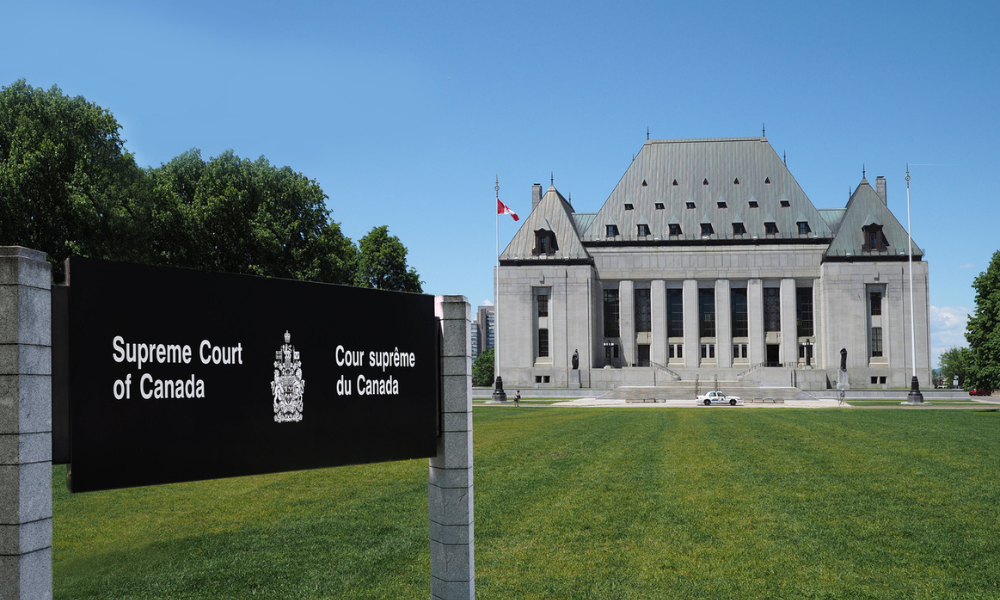IP lawyers say Canada lacks proper legal protections for trade secrets, so vigilance is key. When Facebook was recently ordered to pay a half-billion dollars to ZeniMax Media over a trade secrets violation, the case highlighted the risks inherent in acquiring companies with trade secrets in sectors such as technology and manufacturing. And with the ascendancy of digital technology and the increased mobility of employees, it is easier than ever for trade secrets to be taken and used for the development of competing products.

IP lawyers say Canada lacks proper legal protections for trade secrets, so vigilance is key.
When Facebook was recently ordered to pay a half-billion dollars to ZeniMax Media over a trade secrets violation, the case highlighted the risks inherent in acquiring companies with trade secrets in sectors such as technology and manufacturing. And with the ascendancy of digital technology and the increased mobility of employees, it is easier than ever for trade secrets to be taken and used for the development of competing products.
Intellectual property lawyers caution that employers and companies need to practise more vigilance — and due diligence — in protecting their secrets. And a tighter regime governing trade secrets that would bring Canada more in line with jurisdictions such as the United States would also be advantageous.
Trade secrets in the new world
A trade secret is a property right that differs from a patent in that as soon as the secret is discovered, the discoverer has the full right to use it. The secret may be a plan or process, tool, mechanism or compound known only to its owner and certain employees, and it may consist of any formula, pattern, device or compilation of information that is used in one’s business and which gives the owner an opportunity to gain an advantage over competitors.
Companies from food processors to drug companies have trade secrets, which “are often incremental improvements you make” to products, says Noel Courage, a partner at Bereskin & Parr LLP, an IP law firm in Toronto, who says there is an increasing trend toward awareness and enforcement of trade secrets. “Companies are getting more vigilant about this kind of thing.
“The fact that laws are lacking [in Canada] compared to the U.S. is another issue. It’s a strange culture. As an employee, you’re allowed to take your general skills and knowledge with you, but not trade secrets. A lot of computer guys think they can take what they want.”
François Guay of Smart & Biggar/Fetherstonhaugh in Montreal, who works in the litigation side of IP law, represented the defendants in the oft-cited Positron Inc. v. Desroches et al. case near the beginning of his career, who were just such “computer guys.” The case was one of the most memorable ones that he had litigated, in part because, in 1988, it was at the fore of trade secret cases dealing with computer and telecommunications applications.
“It was a lengthy decision,” says Guay, “50 pages long. The judge [outlined] all the key principles, to make some sort of formula or template that you could apply to most cases . . . He did a good job of listing all the criteria, and the decision became quite famous.”
That case was between Positron Inc., a Montreal company that developed and manufactured computer hardware and software to manage 911 calls. “Positron was quite ahead of all the others in North America with this kind of technology; it was new,” says Guay. Five young employees — “very young, most of them starting to work at Positron, and they had developed the technology for the benefit of Positron — were offered positions in a California company to develop the same kind of product, and when they left they were sued by Positron, who tried to prevent them from getting green cards,” he says.
“They learned through trial and experience . . . to develop products that worked. . . . The key principle with trade secrets is: I can prevent you from misusing my trade secrets if you go to a competitor, but the experience you have gained working with me is yours.”
Justice Biron of the Quebec Superior Court agreed, finding in favour of the defendants. “Trade secrets are usually formulas, manufacturing processes unique to its owner and which have been revealed confidentially to an employee,” he wrote. “This is not experience acquired by an employee but, more exactly, knowledge or ‘savoir-faire’ belonging to the employer and revealed by him for the sole purpose of permitting the employee to produce what the trade secret enables him to do. Included in this category are chemical formulas, recipes, manufacturing technologies . . .”
Guay made an undertaking on his clients’ behalf to respect any trade secrets they had and there had been no non-compete agreement. He calls the case “the perfect case to advance the law,” and one that is still cited frequently.
Compliance and due diligence
Yet departing employees, and the ease with which employees can take material with them when they leave a company — working from home and technology both facilitate that — remain risks, as do mergers and acquisitions.
As parties start M&A talks, they normally have a non-disclosure agreement, at which time the buyer undertakes obligations of secrecy to the seller, says Martin Kratz, a partner in Bennett Jones LLP in Calgary. “And when the transaction is concluded, you really need to reverse those positions. Because now the seller should maintain the secrets, and the buyer should be free to be able to use the confidential information.
“In litigation, we see quite commonly misuse or disclosure of confidential information in unfair competition cases, typically involving rogue employees,” Kratz adds. “That’s not at all uncommon. The only thing that’s really changed is the instrumentality; it’s a lot easier to move trade secrets around in a digital age than it was decades ago.”
Companies that have good compliance programs generally find this is something that can be managed well, he says. A reputable company will tell a new employee that they don’t want any confidential information of former employers. The company will also have a trade secrets protection scheme in place, bolstered when cybesecurity provisions and other industrial security provisions confirm clear obligations in staff.
A company’s agreements and policies should all enforce these obligations, says Kratz. Employers must educate their staff on their policies, and when an employee leaves for another firm, an exit review is a best practice. This review should look at “all ongoing obligations still owed to employer, even after the termination of employment. A best practice is to identify trade secrets the employee had access to and confirm that the employee is unable to bring that information to a new employer.”
Reputable employers can be damaged if employees bring confidential information from another employer. “It can taint their own development efforts . . . and leave them unable to exploit their own research and development” in the event of litigation for trade-secrets violations, Kratz says. “We’ve seen a number of those kinds of cases.”
Guay says companies involved in large transactions often don’t consider trade secrets; “not at all. Quite often, it’s a two-paragraph clause in the big binder, and no one seriously looked at.”
Sanjay Goorachurn, a partner in Smart & Biggar/Fetherstonhaugh in Montreal on the transactional side, has worked in business and cross-border deals on both sides of the Canada-U.S. border and says the “emphasis of the deals is on the more easily understood issues . . .
“There’s so much know-how required to make products work,” Goorachurn says. “A significant investment is made, and there needs to be a corresponding diligence.” Citing the Facebook case, he says senior managers need to conduct this diligence. “What did [the target firm] do, who did they collaborate with and should that raise a flag? That’s the due diligence that’s required,” he says. In the Facebook damage award, the court allocated roughly $200 million out of a $500-million damage award for breaches of a non-disclosure agreement that was pre-acquisition, he says.
“There’s a close relationship between litigation and transaction. If I buy this company, what would be the risk of a solid claim against the target company if we did the deal? Factor the potential litigation risk into evaluation of deal,” Goorachurn advises. Otherwise, he says, “It’s like buying a house without knowing its state.”
Crossing borders
There are variations on how confidential information is maintained in different countries, says Kratz. And more established regimes for protecting trade secrets exist in countries such as the United States, where then U.S. president Barack Obama signed into law the Defend Trade Secrets Act in May 2016.
Companies must pay attention to the ownership and movement of confidential information across borders, he says, noting that in Canada the sharing of information in certain areas is prohibited without a permit: for example, in the area of encryption technology. Companies need to know whether they can lawfully share information depending on the jurisdiction.
“We generally rely on common law rights to provide regulation of trade secret obligations. Unlike the U.S., we don’t have a tort of violation of trade secrets. There has been law reform proposed for Canada,” which to date does not have a separate tort but rather a common-law right under equity for breach of confidence, says Kratz.
A new regime
Do Canada’s trade secrets laws need to be strengthened?
Guay notes that data protection is stronger in Europe, where it goes beyond copyright protection, and there is nothing comparable in Canada.
Changes are “long overdue,” Goorachurn says.
“A company spends a lot of money on developing manufacturing processes or on how to make their factory work better,” he says. “They spend a lot of resources on R&D. The patent does help once the product leaves the factory. But for all the investment by the company, I think there should be more legal support for someone who has to defend that investment.”







